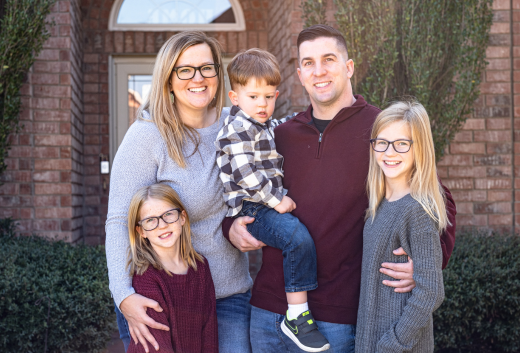As a servicemember, your retirement pension is one of the most important benefits you receive for 20+ years of service. But, if you want your military benefits to continue providing for your survivors after your death, you must opt into the Survivor Benefit Plan (SBP).
When you are retiring from the military, it’s important to consider the SBP, in addition to any life insurance policies you may have, as a way to provide for your surviving family members
Understanding the Survivor Benefit Plan
The SBP is a Department of Defense (DOD) program that provides surviving spouses and eligible dependents with lost military or retirement pay after the death of their enrolled servicemember or retiree. Also known as a survivor annuity plan, the SBP pays the named beneficiary a lifetime benefit of up to 55% of the servicemember’s military pension.
Who Is Eligible for SBP Benefits?
Spouses
Your spouse is typically the primary beneficiary of the SBP. Upon your death, your surviving spouse is eligible to receive SBP benefits for life. However, if they remarry before the age of 55, their eligibility is suspended. Eligibility can be reinstated if that subsequent marriage ends due to death or divorce.
Children
Dependent children can be beneficiaries under SBP. If both parents are military retirees and each chooses SBP for their children, the surviving spouse can only receive one military SBP payment at a time. When the spouse can no longer receive benefits due to death or remarriage before age 55, the eligible children will share the annuity equally. Children can keep receiving SBP payments if they meet certain conditions, such as being unmarried and under a specific age limit or if they have a disability. Disabled dependent children beneficiaries have coverage for life. Other child beneficiaries will age out at age 18 or age 22, if enrolled in college.
Former Spouses
The SBP allows you to elect coverage for former spouses. The costs and benefits under this option are identical to those for spouse coverage. However, electing coverage for a former spouse precludes coverage for the current spouse and/or children of the current spouse. It's important to note that SBP coverage for a spouse ends with a divorce. Coverage for a former spouse does not continue after the divorce unless the servicemember makes a former spouse election within one year of the divorce decree.
Survivor Benefit Plan Coverage and Costs
During active duty, the SBP is provided at no cost. Once you retire, your SBP premium is determined by the base amount selected and the type of beneficiary coverage elected. For spouse-only coverage, the monthly premium is typically 6.5% of the chosen base amount. For example, if your base amount is $2,000, your monthly premium would be $130 (6.5% of $2,000).
Coverage costs also vary based on the amount of pay selected. You can select full coverage at 6.5% of your full gross pay or reduced coverage. However, reduced coverage means your beneficiary will receive payments based on a smaller percentage of your gross pay.
If you opt to include child coverage in addition to spouse coverage you will have to pay an additional premium that is based on your youngest child's age.
SBP vs. Other Options
When considering SBP, you will want to weigh the following factors carefully to find out whether it works with other benefits (and how). When in doubt, consult a financial advisor knowledgeable in military benefits who can help you meet your family's specific needs and circumstances.
Can You Have SBP and VA DIC at the Same Time?
Surviving spouses may be eligible for both SBP and the Department of Veterans Affairs Dependency and Indemnity Compensation (VA DIC).
Historically, there was an offset where DIC payments reduced the amount received from SBP. However, the 2020 National Defense Authorization Act ended the SBP-DIC offset so eligible beneficiaries may be able to receive both entitlements in full.
Is SBP the Best Choice for Your Family?
Consider the following factors:
- Life expectancy: Evaluate the potential duration of benefit payments based on your beneficiary’s life expectancy.
- Financial needs: Assess your family's financial situation, including other sources of income and expenses, to determine whether SBP benefits are necessary.
- Alternative options: Explore other insurance products or financial instruments that might offer comparable benefits.
- Cost of premiums: SBP premiums are deducted from your retired pay and can vary based on the level of coverage selected.
- Tax implications: SBP payments to survivors are taxable, which may affect the net benefit received.
Generally SBP is an irrevocable decision and you will likely not be refunded for unused premiums. You may only withdraw from SBP or change your coverage based on limited circumstances.
How to Enroll in the Survivor Benefit Plan
You must make your decision to enroll in the SBP prior to your final day on active duty. The military finance office handling your retirement will process all the paperwork involved with enrolling in SBP. You’ll also receive group training and individual counseling upon retirement. If you have a spouse and/or child(-ren) at retirement, your spouse’s signature is required if you wish to decline coverage or request reduced coverage. Declining coverage is a permanent choice.
As a new SBP participant, you have a one-year window to terminate the coverage. Your spouse or former spouse must consent if you withdraw from SBP, and future enrollment in SBP is barred once terminated. Also, if you choose to terminate your SBP, you will not be refunded any previously paid premiums, and no annuity will be paid to your beneficiaries upon your death. SBP premiums also stop when there is no longer an eligible beneficiary in a premium category.
Changing Your SBP Coverage
Changing or canceling your SBP coverage is difficult once you start the program. However, there are a few exceptions:
- If you do not enroll because you do not have any beneficiaries, you can add a spouse or child within one year of your marriage date or child’s date of birth.
- You can cancel or terminate your SBP election between the 25th and 36th month of your retirement. Your spouse must provide written agreement.
- You can withdraw from SBP due to a qualifying disability since your spouse will most likely qualify for DIC benefits. However, it may still make sense to elect SBP because they may be fully eligible for both benefits. Your beneficiary must provide written consent.
- If you name a Natural Interest Person (NIP) as your beneficiary, you can terminate your contract anytime. An NIP is someone with a legitimate financial interest in the life of a servicemember or retiree, allowing them to provide SBP coverage to individuals who would be financially impacted by their death. Premiums for NIP are higher than other beneficiary elections.
- If you get a divorce from a covered spouse, you may be able to cancel SBP benefits depending on the court-ordered divorce decree. Canceling your SBP coverage due to divorce is a permanent election.
- If your covered spouse dies, the coverage will be canceled or suspended, or the benefit will transfer fully to eligible dependent children if they were already listed as beneficiaries. If coverage is suspended, you can elect to continue coverage in the event of remarriage if you notify DFAS within one year of the remarriage.
Keep track of your SBP enrollment by checking your Retiree Account Statement available on DFAS myPay | Online Account Management for DFAS Payroll Services. Once a retiree’s death occurs, eligible beneficiaries need to apply to start the SBP annuity, it is not automatic. Be sure to communicate this information with your covered spouse.
Making Sense of SBP with AAFMAA
Take time while you can to help your loved ones prepare for the day you will no longer be here. If you have more questions about SBP or if you need help deciding which life insurance option is right for your family, contact an AAFMAA Membership Coordinator today at 877-398-2263 or get a free quote online at aafmaa.com/getaquote.
This article was originally published October 3, 2021.


.png)


.webp)